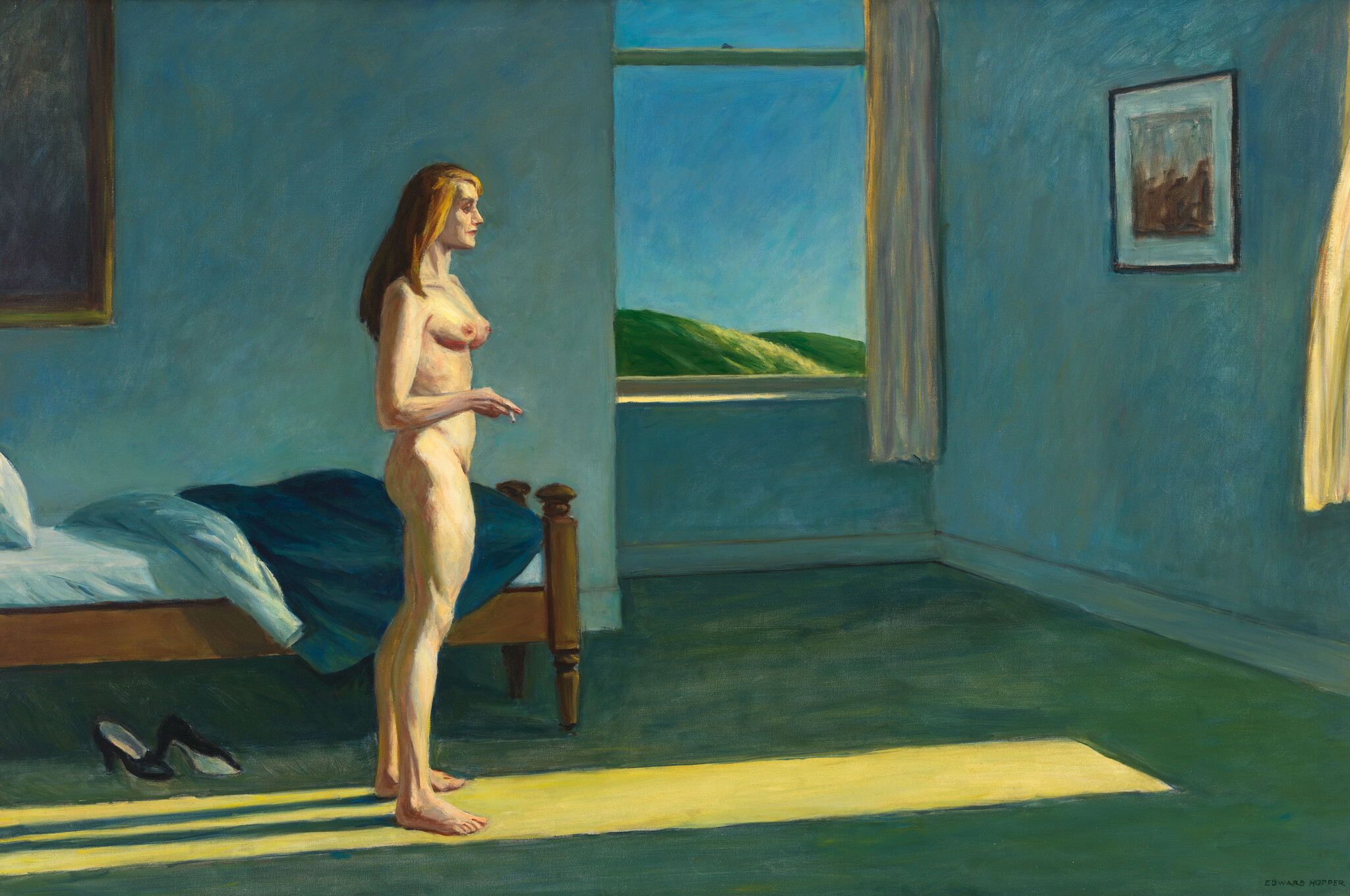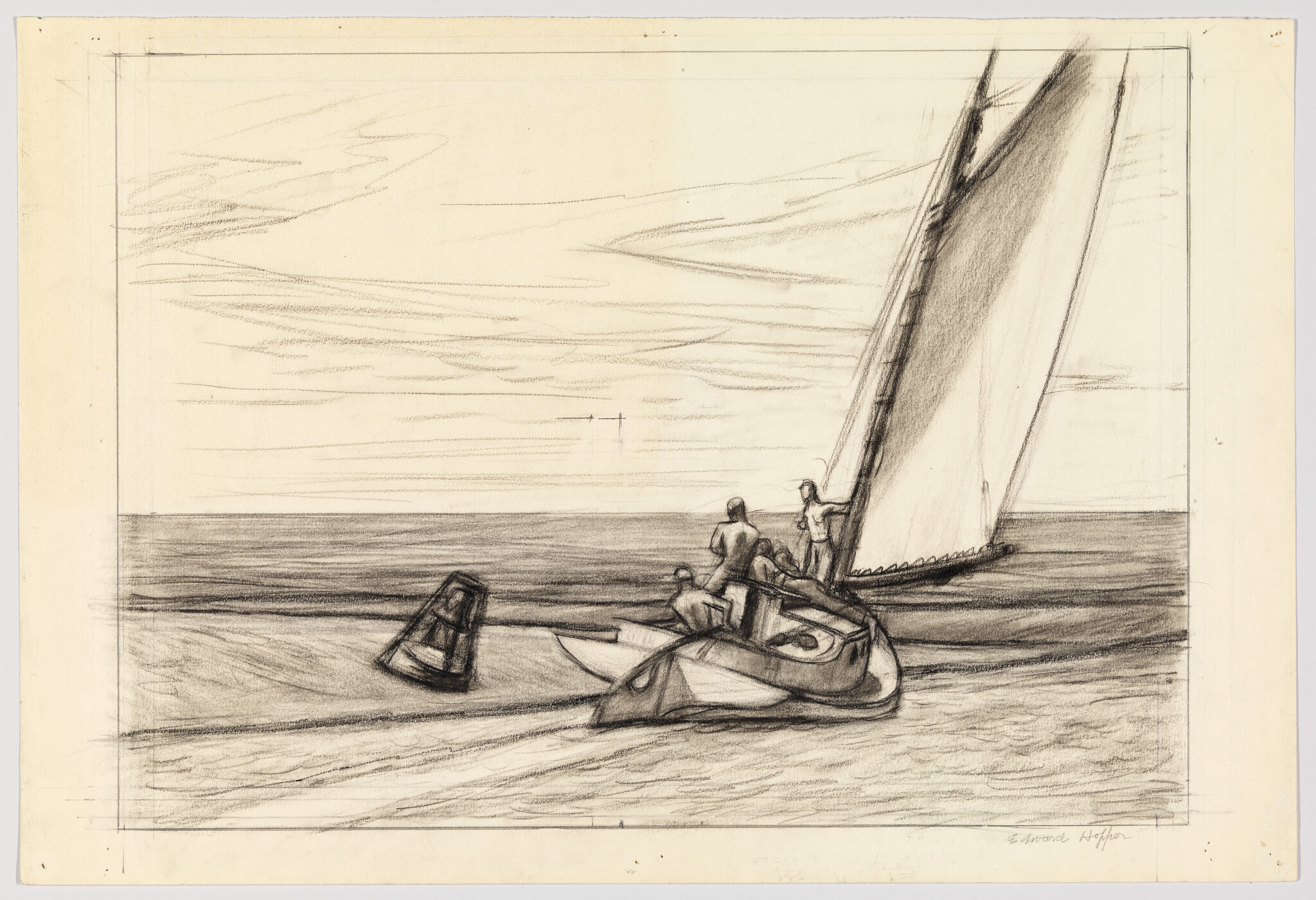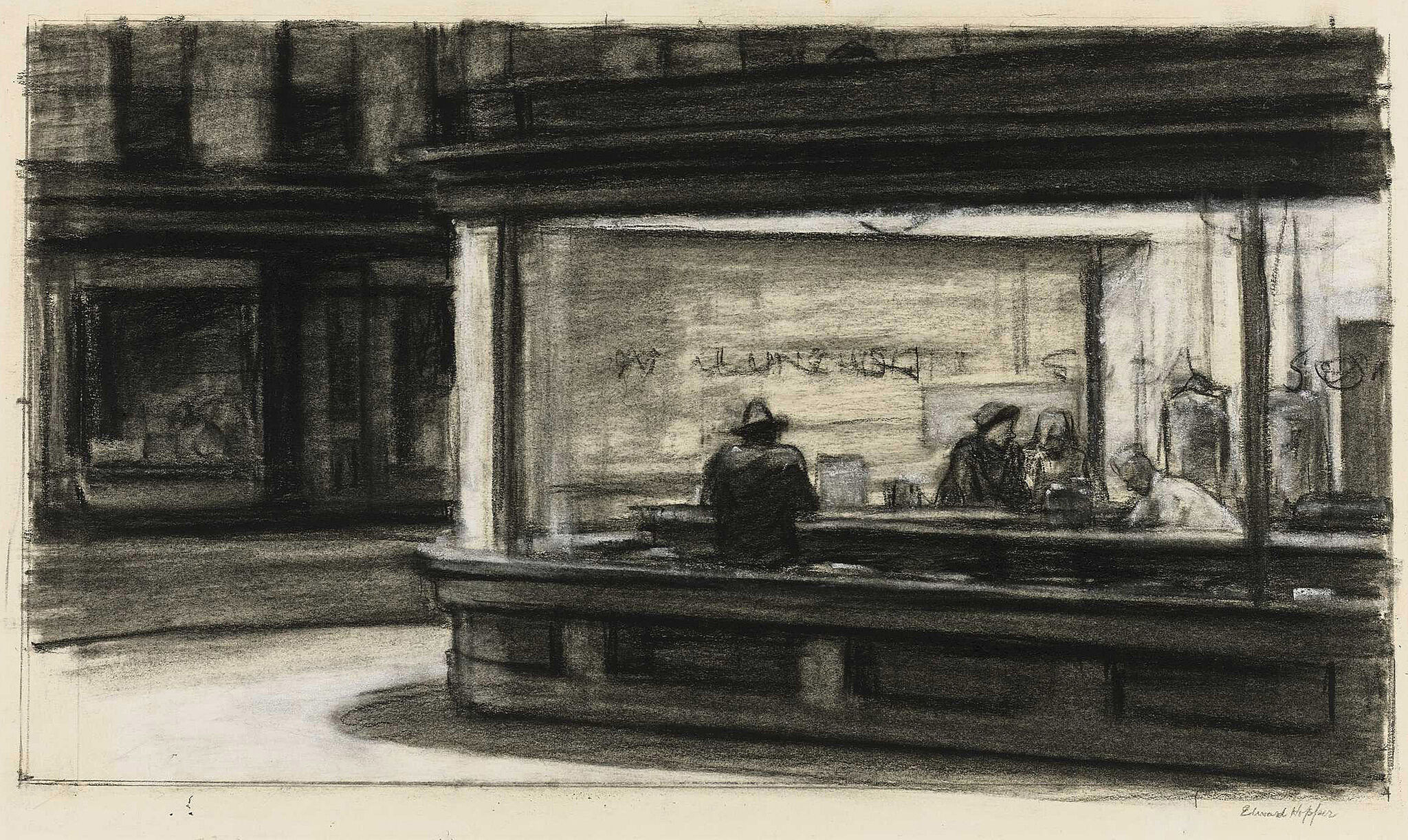Edward Hopper, Study for Ground Swell, 1939
May 21, 2013
0:00
Edward Hopper, Study for Ground Swell, 1939
0:00
Narrator: A sailboat skims over a placid sea—but it seems oddly frozen. In this drawing, Hopper isn’t interested in capturing the speed and movement of a boat as it cuts through the water—something he’s certainly capable of doing. Instead he emphasizes the relationship between man and the sea. But he leaves the exact nature of that relationship somewhat mysterious.
Carter Foster: Hopper was very familiar with boats; he had been drawing and painting them since he was a youth, and very familiar with the subject of sailing, which is a subject that's important in American art. And [he was] also very familiar with a nautical landscape, or marine landscape, the sea.
Hopper began drawing sailboats like this one in his youth—even at this exact angle. It seems likely that he developed this composition from his memory and imagination—not from observation. He made a number of other drawings for the painting Ground Swell. Compositionally, they’re exactly like this one. Some are more or less cropped, and the levels of detail differ, but the structure is the same. When Hopper was working from direct observation—or “from the fact”—there were almost always small differences between the studies. The final work would often represent a synthesis of these views. This composition—which seems to have come into the world fully formed—seems more likely to have been a product of pure imagination.
In Hopper Drawing.



